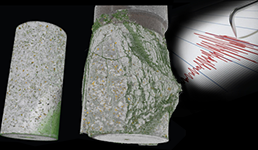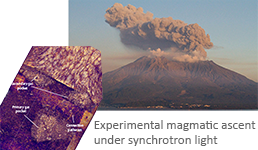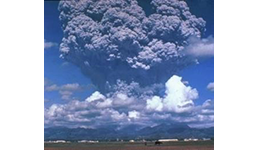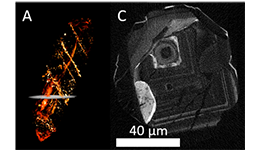Geo-hazards
Several ESRF researchers address topics concerning earthquake generation at depth due to hydrous mineral transformations and the volcanic eruptions styles modulated by magma composition.
Recent research topics
|
|
Benoit Cordonnier (Visiting Scientist at ID19) & Bratislav Lukic (Post doc at ID19) are investigating through triaxial-tests and shock waves the resistance of rocks and the onset of failure. Slow creep, stick and slip, or even ultrafast imaging of rupture; these experiments span the whole dynamic range of natural earthquakes and bring unprecedented observations of how the energy stored in rocks may be released in a fast and powerful displacement. These results are key in better understanding rupture, friction to ultimately provide better forecast of seismic natural hazards.
|
|
|
Benoit Cordonnier (Visiting Scientist at ID19) is experimentally reproducing various volcanic processes to better understand eruptive dynamics. Magma are a composition of bubbles, crystals and liquid which all interplay together and, eventually, lead to the overpressure at source of an explosive eruption. Understanding at a small scale the connectivity, fraction evolution and eventually release of these different phases, ad this for a given magmatic composition, is a necessity to generate the rheological models that will support desicion makers in forecasting volcanic eruptions.
|
|
|
Jean-Philippe Perrillat (Former Visiting Scientist at ID27 now Univ. Lyon, ENS) is investigating the density and rheology of silicate and carbonated melts to better understand the migration of magmas at depths, and the origin of explosive volcanic eruptions. |
|
|
Jussi-Petteri Suuronen (Visiting Scientist at ID16B & Xploraytion GmbH) and coworkers are using X-ray nano-imaging, fluorescence, and diffraction to study mineral microstructures and trace element distributions. A current focus is on shocked zircon, which is an important indicator of past impact events in the Earth and other solar system bodies. Inclusions and zoning within zircon and other minerals can also help understand larger geologic systems in structural or economic geology, especially in multiscale studies where they can be complemented by e.g. microtomography. |







